There are a hundred types of chicken in the worlds now a day that domestically present with a distinguishing characteristic of the desired trait (size, plumage color, comb type, skin color, number of toes, amount of feathering, egg color, and place of origin.) due to the combination of different geographical distribution and selection of crossbreed.
They may be used primarily for eggs, meat, or ornamental purposes and may be used for dual purposes. Different government organizations followed the preset breed standard in the 21st century to get many breeds.
The British poultry standard was the 1st breeding standard followed by the standard of perfection, the Australian poultry standard, and the American Bantam association that created the bantam fowl breed.
20 Largest Chicken Breed You Will Find
Jersey Giant Chicken
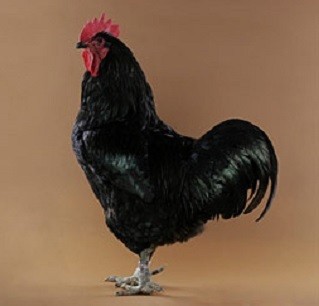
| Egg Laying: | Very Good (4/wk) |
| Egg Color: | Brown |
| Primary Use: | Meat |
| Cold Hardy: | Yes |
| Temperament: | Calm, Docile |
The heaviest American Domestic Chicken breed was created in the late 19th century in Burlington County, New Jersey, by John and Thomas black. They were cross breed with Black Javas, Black Langshans, and Dark Brahmas and added to the standard perfection of the American Poultry Association in 1922.
They grow much slower than today’s chicken breed and were considered the single purpose for meat, but they lay large brown eggs. Different colors of the breed are produced in Giant Jersey (blue, black, and white) with willow legs in the hue. The hens are heavier (13pounds) than males (10 pounds), as they calm breed, but males are rarely aggressive.
Barnevelder Chicken
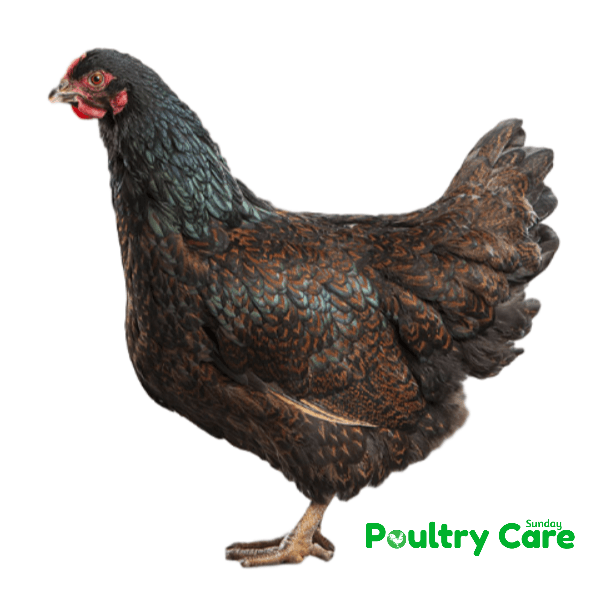
| Egg Laying: | Good (3/wk) |
| Egg Color: | Light brown |
| Primary Use: | Meat |
| Cold Hardy: | Yes |
| Temperament: | Friendly, Active, Quiet, Lively |
The breed that formed between Shanghai and local Dutch chicken is named Barnevelder breed, which is domestically used. Initially, in 1850 the Asian chicken arrived in Europe and crossed with Dutch chicken and was named as Barnevelder after the agricultural exhibition in 1911 at Hagues. They are dual-purpose, as the eggs are brown.
The male is heavier (3-3.5kg) than the female (2-2.5 kg). Different varieties are found in Barnevelder, but the most common is double laced Variety, which is present in females and males; it is melanized black-breasted red. The Netherlands has the autosexing barred, dark brown, partridge, chamois, blue, and silver varieties that are not recognized easily.
Cochin Chicken
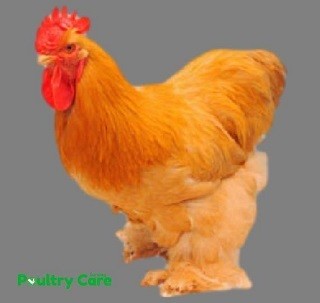
| Egg Laying: | Good (3/wk) |
| Egg Color: | Brown |
| Primary Use: | Ornamental |
| Cold Hardy: | Yes |
| Temperament: | Friendly, Calm, Quiet |
The formerly known Cochin-China Breed is large feather-legged chicken brought from China to Europe from 1840 to 1850 basically for exhibitions. They are domestically present, first known as Shanghai birds, sometimes considered hen fever but later named Cochin-China and included in Standard of Excellence in Exhibition Poultry by William Bernhardt Tegetmeier in 1865.
Dual-purpose breed of large tinted eggs and coarse texture meat Cochin chicken is an expensive productive breed. The male is heavier (3.6-5.9 Kg) while the female is lighter (3.2-53 kg). The clearest and distinguishable character is excessive plumage that covers their feet and yellow color skin beneath the feathers.
Brahma Chicken
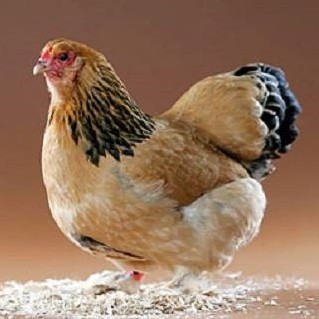
| Egg Laying: | Good (3/wk) |
| Egg Color: | Brown |
| Primary Use: | Eggs |
| Cold Hardy: | Friendly |
| Temperament: | Yes |
Brahma is imported from Chinese ports and developed in the United States, so they are usually American breeds of chicken. The United States is the country of origin of Brahma chicken. Female chicken weight is 4.5kg, and males have heavyweights compared to females; they are almost 5.5kg. They lay brown colored eggs.
Brahma Portra, Burnham, Grey Chittagong, Shanghai are other common names used for Brahma chicken. They have a pea-like comb. They have many uses like; It gives large size brown eggs in the winter season which is about 55-60g in weight. It is a very important meat breed in the United States. Light, dark, and buff are the different varieties of Brahma chicken.
Australorp Chicken
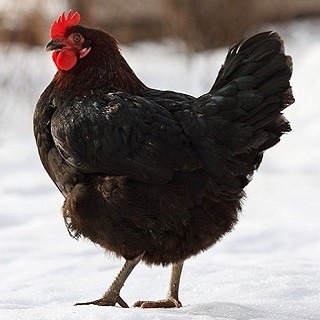
| Egg Laying: | Excellent (5/wk) |
| Egg Color: | Brown |
| Primary Use: | Meat/Eggs |
| Cold Hardy: | Yes |
| Temperament: | Hardy, Docile |
Australorp is a type of chicken breed that originated from Australia; it is also a popular breed in the western world. In the United States, only the black color of this chicken breed is present, but blue and white colors are also recognized in Australia.
They lay brown colored eggs. Black Australorp, Australian Orpington is another name for the Australorp chicken breed. They are used for dual purposes, for laying a large number of eggs (more than 300) and also for meat. Bantam and standard size Australorps are present. Male large chicken is 3.20–4.10 kg in size, and bantam Australorps are 0.96–1.23 kg in size.
Cornish Chicken
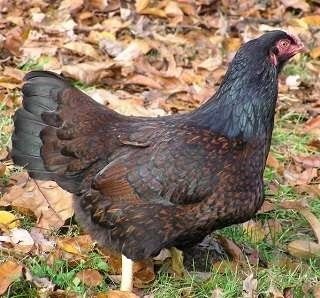
| Egg Laying: | Good (3/wk) |
| Egg Color: | Brown |
| Primary Use: | Meat |
| Cold Hardy: | Yes |
| Temperament: | Aggressive |
It originated in England (Cornwall). The old name of cornish chicken was Cornish Game or Indian Game, which APA then renamed in 1905. It is mostly used for meat. It is considered a large breed chicken. At the age of 16 weeks, they lay eggs.
Its lifespan is shorter, about 5 to 6 years. They are mostly 2.2 to 10 lbs in weight. Feathers of these birds are multicolor, which mostly include blue, brown, and green. It also has a pea comb. They need more protection in extreme cold. There are two varieties named as Jubilee game and the Cornish game.
Orpington Chicken
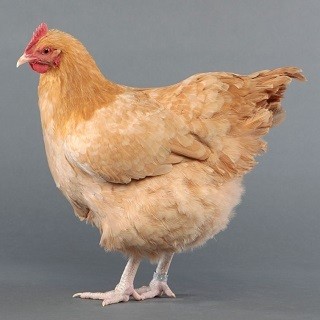
| Egg Laying: | Good (3/wk) |
| Egg Color: | Light Brown |
| Primary Use: | Meat/Eggs |
| Cold Hardy: | Yes |
| Temperament: | Calm |
Orpington chicken is one of the British breed chickens. In the late 19th century, William Cook bred Orpington for the first time. It is considered an English hen. Orpington is a good egg layer that produces about 3 to 5 eggs in one week. Its egg size is large and light brown.
Its lifespan is 8 years or more with 8 to 10 lb weight. It is used for eggs as well as meat. They do not need extra protection in the cold because of their feathers. It has a short back, and the head is small in size. Its skin is white.
Cubalaya Chicken
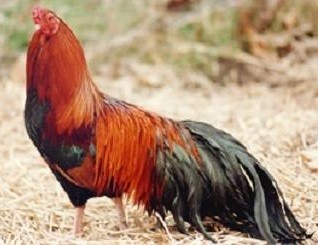
| Egg Laying: | Very Good (4/wk) |
| Egg Color: | Light Brown |
| Primary Use: | Meat/Eggs |
| Cold Hardy: | Yes (in winter) |
| Temperament: | Forager |
By the crossing of European game fowls and oriental fowls of the Philippines Cubalaya chicken breed originated in Cuba. It is mostly present in Cuba and used for ornamental, eggs, and meat. It lays eggs of medium size and light brown.
They are present in the medium size category with 2.4 kg of rooster’s weight and 1.59 kg hen’s weight. They are hard, active, and noisy. It can tolerate all types of climate and does not need any special care. Three varieties of Cubalaya were recognized by APA, including white, black-breasted, and black.
Malines Chicken

| Egg Laying: | Good (3/wk) |
| Egg Color: | Tinted |
| Primary Use: | Meat/Eggs |
| Cold Hardy: | Yes |
| Temperament: | Calm, Stable |
It originated in Antwerp’s province, Belgium. It is a breed from the crossing of local cuckoo patterned farm chickens and many types of oriental chickens. The weight of a female is 9 pounds, and a male is 12 pounds or more. They are heavy, with a short tail and small wings.
They are not flying like other chickens. They lay eggs from the age of six months, about 160 per year, cream or light brown; they are important for laying eggs and meat. Their eyes are red to orange in color and have a small white beak. They are hardy nature birds that can tolerate a few weeks in cold temperatures.
Langshan Chicken
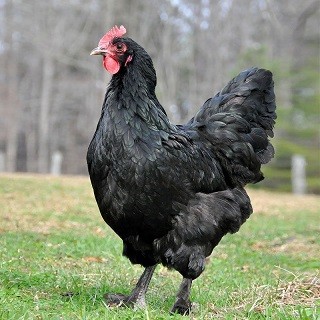
| Egg Laying: | Very Good (4/wk) |
| Egg Color: | Brownish Yellow |
| Primary Use: | Meat/Eggs |
| Cold Hardy: | Yes |
| Temperament: | Docile, Friendly, Tolerant |
It originated in China and is named after the Langshan hill or Langshan district present in china. Langshan is important for meat, eggs, and ornamental as well. It has good meat production and egg-laying ability. In the U.S, three official varieties of Langshan are present, which are blue, black, and white.
These are the tallest chickens among the nongame chicken breeds, having long necks, feathered legs, and long tails. They lay an egg about three per week, which is brown. They are heavy in size, about 7 t 8 lbs. As compared to others, these chickens mature slowly; hens take less time than roosters to fully mature.
Plymouth Rock Chicken
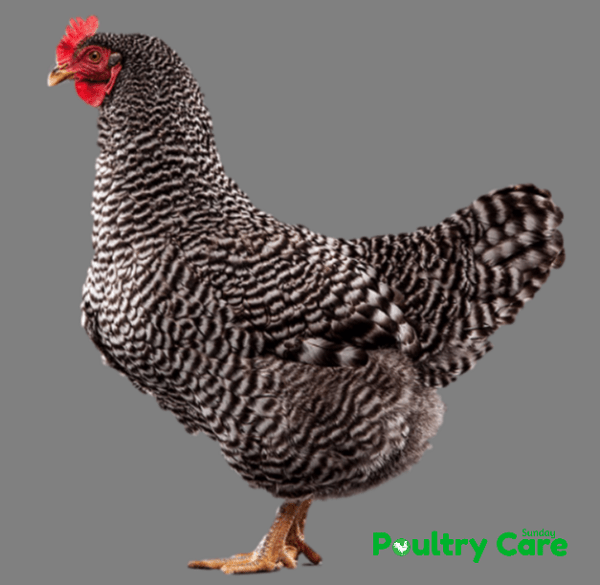
| Egg Laying: | Very Good (4/wk) |
| Egg Color: | Brown, Light Brown |
| Primary Use: | Meat/Eggs |
| Cold Hardy: | Yes |
| Temperament: | Calm |
Plymouth Rock is a breed of chicken that is liked by novice and seasoned ones alike. They are easy to deal with (raise) while a great fun as well. Brought in and disseminated from the town of Plymouth Rock in the 1900s across the whole of America became a sensation due to their egg-cellent egg-laying skills and their laid-back look on life.
These chickens make a wonderful addition to beside-the-house coops, egg sports, excellent meat, and love their friendly and docile nature. As regards their weight, it’s male measure 3.4 Kg, and female 3Kg.
Faverolles Chicken

| Egg Laying: | Very Good (4/wk) |
| Egg Color: | Light brown, Pinkish |
| Primary Use: | Ornamental |
| Cold Hardy: | Yes |
| Temperament: | Gentle, Docile |
Faverolles, a fluffy and feathery breed, had been developed in northern France at the turn of the 20th century that feature agenial nature and good looks. It has evolved from a combination of Cochins, Houdans, and Dorkings.
Other popular contemporary mixed breeds include Rhode Island Reds, Plymouth Rock, Wyandotte, and Barnevelders. Faverolles are arguably the most popular ones. It is a widespread breed as a pet for kids due to its sympathetic behavior.
According to the Poultry Club of Great Britain, they are also very much popular in people having a small home for meat and eggs, according to the Poultry Club of Great Britain male weight 5kg and female weight 4.3Kg.
Malay Chicken
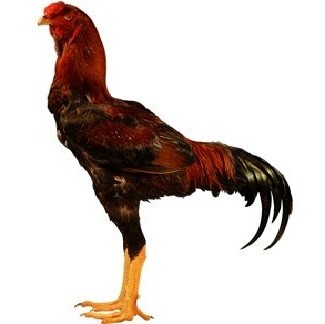
| Egg Laying: | Fair (2/wk) |
| Egg Color: | Light-brown |
| Primary Use: | Meat |
| Cold Hardy: | Yes |
| Temperament: | Aggressive |
It is a breed of game chicken. It is the tallest breed of all chickens, reaching a height up to 90cm. It was first reproducing in Europe and Australia. Malays first appeared at the first British poultry exhibition in 1845. Malay characteristics include an upright posture and healthy muscles, and a wide skull.
Character and personality-wise, these breeds are distinctive. They are disputatious and get worse easily. These days it is chosen as superior egg laying than back in the 1970s coupled with 70 -120 eggs per year for a young hen; older hens put down only 30- 55 eggs.
Dong Tao Chicken
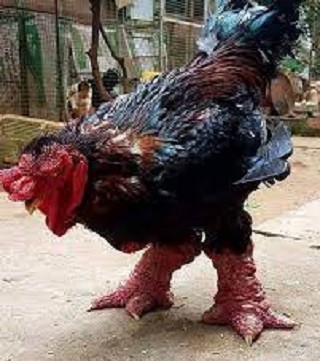
| Egg Laying: | Very Good (4/wk) |
| Egg Color: | Tinted white |
| Primary Use: | Meat/Eggs |
| Cold Hardy: | – |
| Temperament: | Calm |
Dong Tao chicken is also known as Dragon Chicken. It is an infrequent Vietnamese chicken breed having enlarged feet. It develops from the village ĐôngTảo in KhoáiChâu District near Hanoi. These chicken are valued as elegancy in Vietnam.
They were used to breed solely to serve in the royal families. It is the most difficult Variety to breed as its large legs make hatching difficult. Their Hens breaks eggs through its large legs. Its eggs are preserved in the incubator. It yields eight months to a year before chickens are ready for Boucher having five to six kgs by weight.
Barred Rock Chicken

| Egg Laying: | Very Good (4/wk) |
| Egg Color: | Brown, Light Brown |
| Primary Use: | Meat/Eggs |
| Cold Hardy: | Yes |
| Temperament: | Calm |
Barred rock is domestic chicken found in the backyard. The oldest breeds of America it was first shown to the world in the mid-1800s. It provides a base for a broiler industry till world war 2. This Variety has excellency in the production of large brown eggs and meats.
Barred rock possesses a single comb having five points. Comb, wattles, and ear lobes are bright red. It has yellow unbound legs. The beak is also yellow, having a long and wide back. As for the weight of this Variety, it measures male standard 3.4 kg and female 2.9 Kg.
Delaware Chicken

| Egg Laying: | Excellent (5/wk) |
| Egg Color: | Brown |
| Primary Use: | Meat |
| Cold Hardy: | Yes |
| Temperament: | Calm |
The Delaware chicken breed was started 1st from Rhode Island, where George Ellis saw some potential in these birds and started working on them in 1940. He wanted meat and big egg productions.
They are fast feathering and rapid growth breeding birds as they are more competitive in the broiler industry created in many ways, but due to some unusual happening, the Delaware breeding becomes unimportant.
The American Livestock Breed Conservancy had listed the critical status of the breeding in 2009 after being more popular in small farms and homesteads for broiler industries.
Wyandotte Chicken
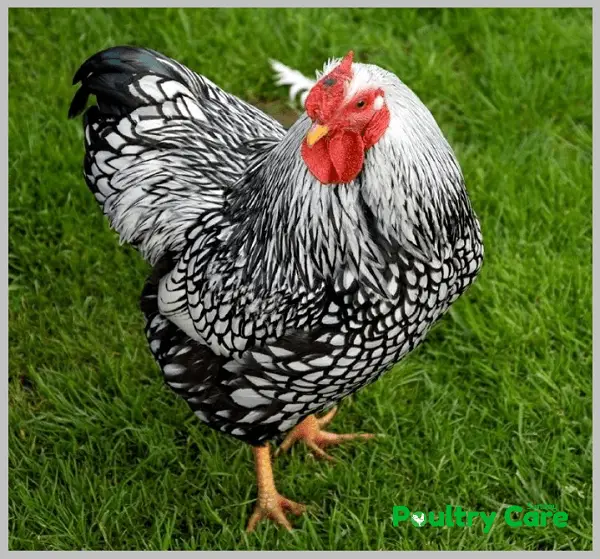
| Egg Laying: | Very Good (4/wk) |
| Egg Color: | Brown, Tan |
| Primary Use: | Meat/Eggs |
| Cold Hardy: | Yes |
| Temperament: | Docile |
The American Chicken breed was developed in 1870 by four H. M. Doubleday, John Ray, L. Whittaker, and Fred Houdlette and named that breed after indigenous Wyandot people of North America.
They are known as American Sebright, a dual-purpose breed used for brown eggs and yellow-skinned meat. They are found in different varieties of colors as they are called show birds.
In Canada and North America, the white Wyandotte variety is routinely highly prized due to being highly consumed daily in these countries as it is bred by former Ontario Minister of Agriculture (1923-1930) John S. Martin.
Rhode Island Red Chicken
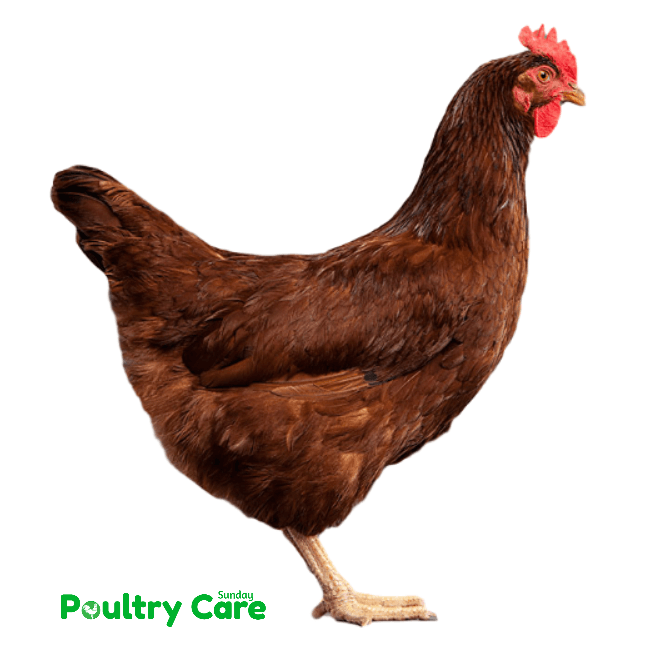
| Egg Laying: | Excellent (5/wk) |
| Egg Color: | BrowYesn |
| Primary Use: | Meat/Eggs |
| Cold Hardy: | Yes |
| Temperament: | Hardy |
The Rhode Island of America is the domestic chicken breed called Rhode Island Red breed which was bred in Rhode Island and Massachusetts in the 19th century. The breed was formed by crossing Malay with brown Leghorn for dual purposes i-e eggs and meat.
The most distinctive character is the plumage color from a lustrous deep red to black but the tail almost black with red-orange eyes, reddish-brown beaks, and yellow feet and legs. They were selectively bred by the crossing of Cochin, Java, Malay, and Shanghai with brown Leghorn birds from Italy for a large number of eggs and meat.
New Hampshire Red Chicken
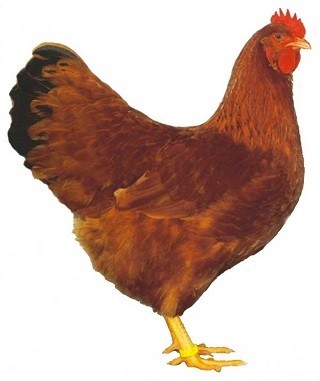
| Egg Laying: | Very Good (4/wk) |
| Egg Color: | Brown |
| Primary Use: | Meat/Eggs |
| Cold Hardy: | Yes |
| Temperament: | Competitve, Aggressive |
The breed of chicken originated from the Rhode Island Red breed by performing several generations of selective breeding in the United State of New Hampshire. The poultry and former aims for dual purposes for meat and egg productions.
In 1915, the strain of Rhode Island Red was brought to New Hampshire to breed, and then it was admitted to the American Standard of perfection.
Being dual purpose breed, deep, broad body, fast-growing feathers with two different reddish and brownish colors. A typical hen weighs 5.5 pounds while a rooster weighs 8.5 pounds approximately, and the New Hampshire legislature designated the breed as the official state of poultry in 2018.
Russian Orloff Chicken
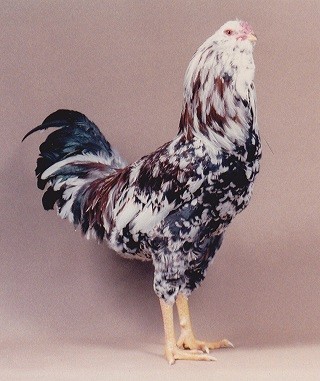
| Egg Laying: | Fair (2/wk) |
| Egg Color: | Light Brown |
| Primary Use: | Meat |
| Cold Hardy: | Yes |
| Temperament: | Calm |
This breed was named Russian Orloffafter Alexei GrigoryevichOrlov, a Russian Count but the modern researcher claimed that the Orloff appeared first in Persia and then distributed around Europe and Asia by the 17th century.
It became part of the American Poultry Association Breed Standard, but in the 21st century, it was considered endangered by The Livestock Conservancy.
They are the dual-purpose breed of light brown eggs with different color varieties (Black, White, Spangled, Black-tailed Red, Mahogany, and Cuckoo). The weights of both males and females vary; hens are about 6.6 pounds’ while the rooster 7.9 pounds.
Why Would You Want To Raise A Large Chicken Breed?
There are several aims and objectives of raising chicken breeds, including egg production, meat production, exhibition, hobby, and sustainable living purposes.
Egg Production
The egg production varies from hen’s point of view, as they all lay eggs but different in sizes, numbers, and colors. A rooster is needless for infertile eggs because these eggs are used for feeding purposes but for hatching the chick, a rooster needs the hen to hatch a fertile egg.
A hen usually lays eggs after 26 hours as the breeder raises the hatching of the egg with less time and increases the quantity or number of eggs than the normal one.
The egg color and size vary between the breeders including white and various shades of brown color. The most important thing is the rate of egg production, especially white Leghorn, which are the best choice for backyard poultry and egg production at the commercial level.
Meat Production
There is a difference between egg-laying and meat-producing chicken. The chickens that produce eggs are slowly growing compared to others, but those chickens that do not lay eggs are fed with high protein contents to grow faster.
The raising in chicken breeding helps in double purposes as they lay an egg and grow faster, which results in higher domestic values at low cost. The meat producers’ chicken is also selectable for breeding to grow faster with high feeding efficiency. The breeder chicken reaches the roasting stage during livestock caring practices in just 8-12 weeks.
Shows and Exhibition of Poultry
The breeding of different chickens is exhibited with their distinctive characteristic of dual purposes attracting the breeder for other varieties productions and becoming popular.
The American Standard of Perfection is a publication by the American Poultry Association (APA) that completely describes the breeders and varieties of domestically available chickens. This publication also investigates the best breeder trait to be exhibited.
Are Larger Chickens More Aggressive?
The size of the chicken is rarely related to behavior patterns. The largest breed of chickens is calmer in their manner as compared to the natural or true breeder, and they do not tend to fight.
Rooster is very aggressive compared to hens because they are often used for fighting and entertainment. Rooster is more aggressive in the spring season and the early stages of life.
Aggression is not dependent on the breed’s size, but sometimes heavy roosters more aggressive lose the fight at their size. The main way to control aggression is by providing space irrespective of the size or gender of the chicken. So, aggression is not related to the behavior and size of chickens.
Do Large Chickens Lay Larger Eggs?
The larger chicken produces larger chickens, but the production of large size and number of eggs at the commercial level is not the right choice for breeding production. Instead of breeding for larger sizes, egg production must choose high-yielding egg breeders.
For example, Rhode Island Red chicken is larger chicken and lays lots of eggs, but Leghorn’s smaller chickens also lay lots of eggs. So the necessary thing for breeding to focus on the double purpose of breeding is the larger size of the eggs.
There are few chicken breeds, including Marans, Rhode Island Reds, Langshans, Jersey Giants, Barred Rocks, Welsummers, and Orpingtons, producing decent quantities and large jumbo size eggs.
Do Large Chickens Have More Health Problems?
The health of the chicken depends upon the breeding varieties. If the chicken only breeds for meat purposes and provides more protein foods, they could be suffering from illness. Similarly, a clean environment, proper feeding, and vaccination can reduce the health risk.
Cornish Cross chicken breed for fast growth and body mass results in health problems like obesity, arthritis, gout, heart attacks, bumblefoot, infections, and impacted crops in large breed chickens. It is very important to notice in hybrid broiler breeds, especially as they suffer from leg and joint problems due to rapid growth and increased mass of the body.
Conclusion
The present study concluded that the largest chicken breed plays a significant role in poultry farming at the domestic level and helpful for economic development in developing and developed countries.
The largest chicken breeds are more important in producing eggs, meat, and exhibition purposes, with selectable characters, which are the advantages. Similarly, the disadvantage includes infectious diseases in the largest breeds of chickens and joint and leg disease due to overgrowth.
The native chicken is healthier than hybrid broiler breeds because it forces supplemental growth. Adaptation to the environment of the largest chicken breed is also difficult. In a nutshell, the breeding of the largest chicken has many advantages, with a few disadvantages.
Last Updated on January 14, 2025 by Pauline G. Carter

